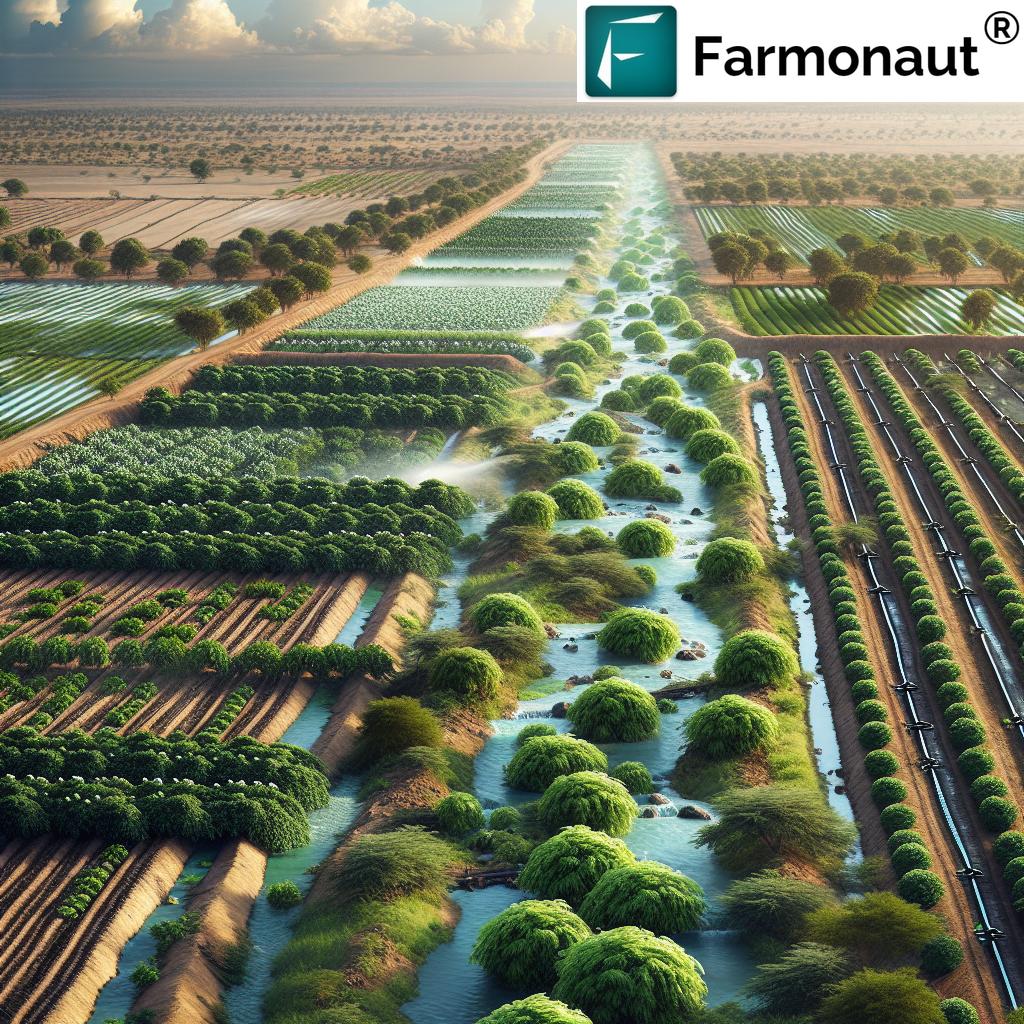Almond How Much Water: Tree Usage & Plantation India – 2025 Guide for Sustainable Almond Cultivation
“An almond tree in India typically requires about 12,000 to 14,000 liters of water annually for optimal growth.”
Introduction: Almond Plantation in India’s Horticultural Landscape
Almond cultivation in India has garnered increasing attention over the past decade, positioning itself as a lucrative and high-value segment within the nation’s expanding horticulture sector. As our country seeks to diversify agricultural practices and promote more profitable crops, almonds offer attractive economic and health benefits, with steady increases in both domestic demand and potential exports. However, this promising sector faces scrutiny, especially regarding almond how much water each tree requires, which directly impacts environmental sustainability and resource management, particularly in a water-scarce country like India.
Given almonds’ significant water requirements, efficient water management and adoption of sustainable farming practices are increasingly being seen as critical for the future viability of almond plantations, especially as we head into 2025 and beyond.
Almond How Much Water? Understanding Tree Usage & Demand
Almond tree water usage is known to be relatively high compared to many other plantation crops. On average:
- A mature almond tree requires approximately 4 to 6 acre-feet per hectare annually – that is about 4,900 to 7,400 cubic meters per hectare each year.
- During peak growth and nut development (particularly in hot, dry climates), a tree may require nearly 3,000 to 4,000 liters per day.
This level of consumption remains significant and thus, managing it is truly crucial for ensuring sustainability in Indian regions where water resources are often scarce or irregular. Traditional irrigation methods such as flood irrigation exacerbate the wastage problem, with as much as 30-40% water loss due to evaporation and runoff. The adoption of more efficient irrigation techniques, like drip irrigation, has proven to improve water use by delivering water directly to the root zone, but seepage and adoption rates vary by region and farm size.
Focus keyword: Almond how much water, almond tree water usage—this discussion underlines why water management is central to both prosperity and sustainability in almond farming, especially as plantations expand into diverse climatic regions and conditions in India.
Key Factors Affecting Almond Tree Water Usage
- Growth stage: Young trees consume less water, while mature trees (3–4 years and above) use significantly more, especially during nut development months (March to June in most Indian states).
- Climatic conditions: Hot and dry areas (such as Jammu, Kashmir, Ladakh, and parts of Himachal Pradesh) require increased watering, especially as atmospheric demand rises in summer.
- Soil type and structure: Sandy and loamy soils drain faster, requiring adjusted and frequent irrigation to maintain optimal moisture.
- Irrigation system: Efficient systems like drip and appropriately scheduled sprinkler irrigation dramatically improve water-use efficiency.
Efficient water usage isn’t just a necessity for crop yield, but also a responsibility for sustainable agricultural growth in India as we approach 2025.
Irrigation Methods for Almond Plantations: Traditional vs Efficient Techniques
How irrigation is managed makes an enormous difference in almond how much water is used – and wasted – per season. Here’s an in-depth look at the main irrigation methods:
-
Flood Irrigation
The traditional method is still prevalent in northern India, wherein entire sections of almond fields are flooded at intervals. Significant water lost to runoff and evaporation. Most studies show water wastage of up to 40% or higher compared to drip techniques.
Environmental Impact: Contributes to soil erosion, waterlogging, and wasted resources. -
Sprinkler Irrigation
Enables more uniform watering of almond plantations, but still has notable evaporation losses, especially in dry and windy climates. -
Drip Irrigation
The most efficient irrigation method utilized in modern almond cultivation. Water is delivered directly to the root zone, reducing evaporation and targeting each tree’s water requirement.
Benefits: Reduces total almond plantation water usage by up to 30% and supports sustainable resource management throughout the tree’s lifecycle.
The future of almond cultivation in India clearly lies with precision irrigation technologies such as drip systems and real-time soil moisture monitoring.
“Efficient drip irrigation can reduce almond plantation water usage by up to 30% compared to traditional flood irrigation methods.”
Comparative Water Usage Table: Almond vs Other Plantation Crops
| Growth Stage / Crop | Estimated Water Usage (liters/tree/day) |
Typical Irrigation Methods | Sustainability Impact |
|---|---|---|---|
| Establishment (Year 1 Almond) | 5–8 | Flood / Drip | Low environmental risk, but ensure gentle soil moisture; Drip is highly efficient. |
| Young Tree (2–3 Years) | 10–15 | Flood / Drip/Sprinkler | Risk of over-watering with flood. Drip increases efficiency by up to 30%. |
| Mature Tree (4+ Years) | 30–40 (during peak) | Drip / Flood / Sprinkler | Drip offers best control & lowest water loss. Flood is unsustainable for large plantations. |
| Almond (all stages, average) | 20–25 | Drip / Flood / Sprinkler | Higher overall water demand; Drip irrigation recommended. |
| Walnut (mature) | 15–20 | Flood / Drip | Moderate; responds well to efficient irrigation. |
| Pistachio (mature) | 10–16 | Drip / Flood | Lower water footprint; sustainability-friendly. |
This table highlights how almond tree water usage is considerably higher than many common orchard crops, further supporting the need for efficient irrigation technologies and meticulous water management across Indian almond plantations.
Emerging Regional Trends – Almond Plantation in India’s Diverse Regions
Almond plantation in India has historically been limited to the northern Himalayan belt—mainly Jammu & Kashmir and Ladakh, where cool winters and dry summers make for conducive climatic conditions. Many plantations in these regions rely on traditional knowledge, but shifting rainfall, temperature extremes, and increasing demand for almonds nationwide are driving expansion and innovation.
Key Expanding Almond Regions in India
- Kashmir Valley & Ladakh: The epicenter for Indian almond cultivation; produces the bulk of market supply due to suitable weather and centuries-old farming practices.
- Himachal Pradesh & Uttarakhand: Emerging frontiers, experimenting with new varietals adapted to slightly warmer climates and elevated terrain.
- Central Indian States (e.g., Madhya Pradesh, Rajasthan): Some pilot plantations and agricultural extension services are experimenting with drought-tolerant hybrid saplings and drip irrigation to find viable models for hotter regions.
- Pockets in Punjab & Haryana: Limited but growing interest due to high-value returns and increasing cost of paddy farming.
Government support and agricultural extension services have actively promoted almond farming as a diversification strategy and a way to empower small and marginal farmers. The Indian almond tree market is now seeing sustained investments in quality saplings, disease-resistant varieties, and new management techniques to improve both water-use efficiency and overall orchard productivity.
Almond Tree Sale & Market Dynamics (2025)
As the almond plantation in India continues to expand, the almond tree sale sector has evolved into a thriving niche market. Here’s what’s trending in the almond sapling market as of 2025:
- Sapling Varieties: Nurseries now supply high-yielding, disease-resistant, and climate-adapted saplings. Both hybrid and grafted saplings are popular as they combine drought resistance, early fruiting, and robust yields—essential for commercial productivity given climatic uncertainties in India.
- Price Range: Quality almond saplings are available for INR 150 to INR 500 per sapling, varying by age, rootstock health, and variety.
- Sapling Selection: Planting the right sapling for each region is critical—for instance, choosing chilling-hours tolerant cultivars in Jammu & Kashmir and drought-resistant hybrids in central and western India.
The Indian almond market not only caters to domestic consumption but is increasingly seeing interest for export markets, which makes sustainability in sapling production and orchard establishment all the more vital in the years ahead.
Key Considerations for Almond Sapling Selection
- Rootstock Resistance – Drought and pest resistance is crucial for sustainable almond plantation in water-stressed or high-temperature regions.
- Early Fruiting Varieties – Early maturing cultivars reduce time-to-yield, hence improving farm profitability.
- Local Nursery Practices – Sourcing from reputed nurseries with certified disease-free plants ensures healthy plantation establishment.
For almond tree sale inquiries, farmers should always prioritize rootstock suitability and consult relevant agri-horticulture experts to ensure plantation sustainability.
Key Farming Practices For Water-Efficient Almond Cultivation (2025 Onwards)
-
Soil Health Management
- Regular addition of organic matter (compost, green mulch) improves water retention.
- Mulching reduces evaporation loss and maintains soil temperature—crucial during dry phases.
-
Precision Irrigation Scheduling
- Using soil moisture sensors and automated drip irrigation (where accessible) allows for just-in-time watering.
- Farmers in regions with irregular rainfall benefit from satellite monitoring, which helps optimize application.
-
Rainwater Harvesting & Water Storage
- Farm ponds and tanks collect seasonal rainfall, ensuring more sustainable irrigation during dry spells.
- Integrated rainwater harvesting systems also recharge groundwater for the long-term irrigation of almond plantations in India.
-
Selection of Drought-Tolerant Varieties
- Opting for varietals suited for specific climatic conditions—higher chilling in the north, drought resistance in the central and western zones.
-
Timed Irrigation During Critical Phases
- Most almond water demand is during flowering to nut development (typically March–June).
- Deficit irrigation (reducing water during less critical phases) can maintain yield and save water.
By combining these practices, Indian almond farmers can reduce per-tree water usage, boost productivity, and contribute to a more sustainable agricultural sector.
Farmonaut’s Role in Precision Irrigation & Almond Sustainability
As a leader in satellite-based agricultural solutions, we at Farmonaut empower almond farmers, extension officials, and sector planners with:
- Real-time satellite crop monitoring (like NDVI for plant health and NDWI for water stress mapping)
- AI-based irrigation advisory via our Jeevn AI system, ensuring crops receive the right amount of water at the right time
- Environmental impact monitoring, including carbon footprint tracking for almond orchards and guidance on climate-resilient practices
Our platform aids resource optimization and improves operational efficiency for almond farming at all scales, helping to ensure sustainable growth in India’s almond sector.
Learn about Farmonaut’s Large Scale Farm Management platform – designed for cost-effective, satellite monitoring of almond plantations and more.
Explore Farmonaut’s Satellite Monitoring API – integrate live data, track almond water usage, and optimize orchard efficiency.
Developer? Check out Farmonaut’s API Technical Docs for integrating agricultural monitoring and weather intelligence.
How We Use Satellite Solutions For Almond Sustainability
Water remains the single most critical input for almond productivity and sustainability in India’s climate. To strike the right balance between profitability and environmental stewardship, it is essential to harness technology that offers a “bird’s-eye view” and granular field-level insights.
We at Farmonaut provide:
- Satellite-based NDWI (Normalized Difference Water Index): Detects moisture availability and stress at every stage of almond growth, enabling precise, real-time irrigation management.
- AI Advisory Systems: Our Jeevn AI interprets weather and soil data to suggest dynamic irrigation schedules and predict water stress before it affects yield.
- Blockchain Traceability: Ensures supply chain transparency for almond produce—benefiting farmers, buyers, and eco-conscious consumers.
- Environmental Impact Monitoring: Real-time tracking of carbon footprint and emissions, further supporting responsible almond cultivation practices. See our Carbon Footprinting Tool.
Our solutions are tailored for individual farmers, large agribusinesses, and government planners—offering affordable remote field monitoring via Android, iOS, and web apps.
Sustainability & The Future: Making Almond Plantations Viable in India
Sustainability isn’t just a buzzword in almond farming—it is rapidly becoming the central challenge and opportunity for almond plantation in India as we approach 2025. The stark realities of water resource scarcity, climate variability, and rising input costs mean:
- Integrated Water Management – Combining rainwater harvesting, soil moisture conservation techniques, and efficient irrigation is essential to reduce overall water demand per hectare while safeguarding local water tables.
- Policy & Land Use Planning – Where government planners and agri-extension services support expansion, water footprint assessments and environmental guidelines are vital so that almond tree sale and plantation does not exacerbate regional water scarcity.
- Drought-Tolerant Almond Varieties – Breeding and planting trees suited for India’s drier, hotter climates will diversify farming income without putting excess strain on fragile ecosystems.
Key Note: Yield improvement and water efficiency must walk hand-in-hand for Indian almond plantations to succeed in the next agricultural era.
Additionally, incorporating blockchain-based traceability for produce provides market transparency and encourages sustainable farming practices from field to fork.
As a technology provider, we support almond sustainability in all these ways—and more—to future-proof Indian horticulture for generations to come.
Frequently Asked Questions (FAQ)
- How much water does an almond tree consume in India per year?
- On average, a mature almond tree in India requires 12,000–14,000 liters annually, which generally translates to 3,000–4,000 liters per tree per day during peak growth, especially in hot, dry climates.
- What’s the most sustainable irrigation method for almonds?
- Drip irrigation is currently the most efficient and sustainable method, reducing overall water use by up to 30% compared to flood irrigation, and ensuring minimal evaporation loss.
- Is almond farming viable in central or southern India?
- Yes, with the right drought-tolerant sapling selection and efficient irrigation, pilot plantations are proving successful. It is, however, crucial to monitor climatic and water conditions regularly.
- How do farmers ensure sustainable almond cultivation?
- By investing in efficient irrigation systems (like drip), selecting region-suited saplings, using mulching, implementing rainwater harvesting, and monitoring soil health.
- How can satellite technology help almond farmers?
- Satellite data assists in real-time moisture monitoring, scheduling irrigation, yield prediction, and environmental footprinting. This helps optimize resource use without compromising productivity.
- Are there government schemes supporting almond farmers?
- Yes, government and extension services in states like Jammu & Kashmir, Himachal Pradesh, and Uttarakhand promote almond diversification with technical and subsidy support. Always check with local agri-offices for ongoing schemes.
- How critical is water management for Indian almond plantations in 2025?
- Water management remains the central factor determining the environmental viability and economic success of almond farming—especially in a climate-affected future.
Conclusion: The Road Ahead for Almonds, Water Efficiency & Indian Agriculture
To summarize, the answer to “almond how much water?” lies at the heart of not just orchard productivity but also sustainable agricultural future in India.
Almond trees carry high water demands—especially in diverse, hot, and dry Indian climates—but with technology adoption, efficient irrigation, smart sapling selection, and sustainable farming practices, the sector can thrive without depleting our water resources.
Whether you are a smallholder in Jammu, an agribusiness in central India, or an investor in the lucrative almond market, responsible resource management and technology-led solutions will determine the success and viability of almond cultivation through 2025 and far beyond.
As a leader in affordable satellite solutions, we at Farmonaut will continue developing tools and insights that empower Indian farmers, planners, and the almond sector to make informed, sustainable, and profitable decisions.
Ready to monitor, manage, and future-proof your almond orchard? Download our app, explore the API, or see our product pages for advisory and field intelligence solutions.
Manage large plantations with precision using Farmonaut’s Large Scale Farm Management tools – satellite, AI, and affordable for all.
Track the environmental impact of your almond orchard with our carbon footprinting solutions.
Use product traceability to build customer trust and ensure the sustainability of your almond business.
Farmonaut Subscription Table














